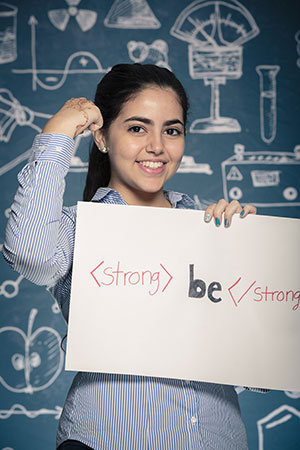Full Transparency
Our editorial transparency tool uses blockchain technology to permanently log all changes made to official releases after publication. However, this post is not an official release and therefore not tracked. Visit our learn more for more information.

Meet Maria Mejia, a 15-year old Latina girl who hopes to change the world through computer coding.
She was born in Colombia, her parents bringing her to the United States when she was three years old. Her dad was an aerospace engineer back in Medellin and always pushed her to get into technology – not that she needed much convincing.
“I’ve always been good at math and science…and always had an interest in STEM topics,” says Maria.
Last summer in Miami, Maria plunged into a seven-week summer program in computer science, Girls Who Code, sponsored by Verizon as part of an ongoing commitment to encourage STEM (science, technology, engineering and math) education, particularly for underrepresented populations.
Breaking Barriers for Breakthrough Thinking
Women and Hispanics are undeniably underrepresented in STEM occupations. In 2011, Hispanics made up less than 7 percent of the STEM workforce*. In 2011, women composed just 26 percent of the U.S. STEM workforce*.
Maria, along with 32 other teenagers in the Girls Who Code program, wants to break those trends.
“The field needs more diversity,” she said. “You need those different points of view in order to make something that works for as many people as possible.”
She wants to bust those stereotypes. Having always been the kind of person “fascinated by metal and wires and taking things apart and putting them back together,” she is undaunted at the prospect of breaking in to fields heavily dominated by men.
“I never felt like I was less than someone else just because I was a girl,” she says.
Hats Off to Hands-On Learning
Maria attends a tech-minded high school in downtown Miami called iPreparatory Academy, but it was the Girls Who Code program that ratcheted up her interest in technology to another level. After graduating from the Girls Who Code program summer, Maria gained enough know-how to help design an app that would use face-recognition technology, not passwords, to keep information secure.
“It’s this really cool technology that I never thought I’d be able to work with,” she said, newfound confidence on display as the program reached its close in August. “But, here we are, figuring out the coding that goes into identifying someone’s face. Here I am, understanding every computer language I see.”
Maria doesn’t know what career she’ll pursue, but she has no doubt computer science will be a part of it.
“I’m inspired to own my own Fortune 500 Company someday. And I also want to help other girls who are not only interested in STEM, but any girl who faces inequality in her everyday life because of her gender.”
*Source: U.S. Census Bureau